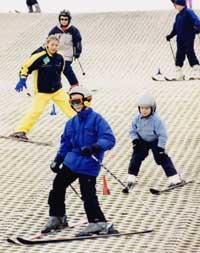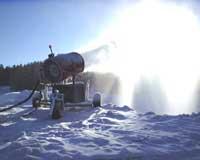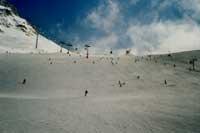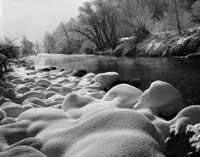White and apparent. Access to snow anytime and anywhere
strong>We are in full form of skiing and fans of this sport listen carefully to the snow situation. But today you can ski all year round. There are also covered ski slopes! In fact, at any time snow techniques are increasingly developed and are used not only in winter sports, but also in other areas. Of course it is not a real snow, but if you do your job it is enough.

For skiing outside, for skiing inside, for seeing the surroundings in white and white in June, or for setting Christmas. Artificial snow can have multiple uses and depending on these snow training techniques are adapted.
Ski resorts use artificial snow to extend the season or to cope with dry winter. Fictional snow should have the shape and behavior of the real on the ski slopes. Therefore, machine snow has improved significantly in recent years and is increasingly dependent on chemicals. The base of this snow is water. They often grind large blocks of ice and splash the pieces with the help of a cannon. On other occasions the cannon expels water just above the freezing point. By means of compressed air or electric fans, the water is atomized and dispersed in small drops in a wide area to be frozen before hitting the ground. In indoor sports centers, water normally freezes with liquid nitrogen or carbon dioxide.
Along with water another component is needed so that water can form ice crystals around it. This material can be of various types, and to choose the most suitable you have to take into account the temperature. When the temperature is relatively low (-6/-9°C) almost any impurity can be used. Calcium and magnesium ions, clay particles or organic matter are mainly used. However, if the temperature is not low enough (above -5°C), more complex materials are needed. You can use silver iodine, soaps and detergents, mushrooms or lichens, among others.

In any case, the chemicals made to the effect are the most used. The best known is Snomax. The crystallization of the ice is done with proteins of a bacteria that incites and seems real. The new product called Drift is also gaining strength. This product makes the water freeze faster by weakening the hydrogen bonds, allowing to prepare the tracks faster.
Artificial snow can also be used to control ski conditions. In fact, the use of the tracks has changed a lot due to the spread of snowboarding and other sports. This has influenced the preparation of the slopes and now they use artificial snow to adapt each area to a specific sport.
On the other hand, in some places ‘dry tracks’ are used. In them they only need a slope to be able to place on it a surface that meets the ski conditions. This surface can be made of wood, metal or plastic, and most can be removed and placed when desired. The most recent ones resemble a snow carpet, and the best known is Snowflex, which is sliding, with several layers, one of them a cushion impact cushion. Water is pumped between the layers to keep the carpet moist and reduce friction.
The fictional snow

Snow at any time is not just a concern of the winter sports industry. In the audiovisual world it is not common to expect natural snow. The cannon snow in the ski resorts is not frequently used in the cinema, since with the heat of the lights quickly melts the snow and when it falls does not form snowflake. In any case, this does not seem to be an important problem, since in cinema and television more than one hundred materials are used instead of snow.
They often throw materials like paper, starch or cellulose and keep them in the air with a fan. The paper is very moldable and starch and cellulose look good to produce snow dust or ice sheets on plants and soil, but can be slippery when walking on them. In the background, fire foam is often used. This material is cheap, but you can not go over, as it would be obvious that it is not the real snow.
Flakes for mashed potatoes, on the other hand, seem really. They only have two problems: it is noted that they are potato flakes and can not be wet if you do not want the decoration to be filled with mashed potatoes.

The snowy winter landscape therefore requires taking into account all possible events and actors. To achieve this, scientists, technicians and entrepreneurs engaged in these tasks feel well involved. In short, to attract people and get benefits, the results must be persuasive.
Published in 7K.
Buletina
Bidali zure helbide elektronikoa eta jaso asteroko buletina zure sarrera-ontzian











